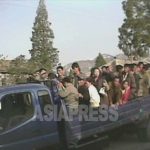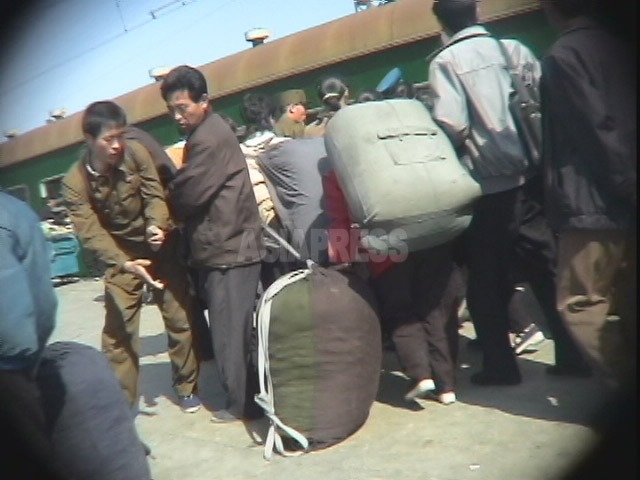
Hamhung is North Korea’s second largest city, with an estimated population of 700,000 to 800,000 people. The city’s economic situation appears severe given that for the last two or so years, rumors have spread throughout North Korea about continued deaths in the city due to starvation and disease, along with high levels of crime. Movement between regions is still strictly controlled, so it is difficult to get details about the situation in the city; however, an ASIAPRESS reporting partner in the northern part of the country recently provided vivid testimony about conditions there through people travelling in and out of the city. (KANG Ji-won / ISHIMARU Jiro)
◆ Information controls made it impossible for N. Koreans to know what’s going on
“It seems like a lot of people in Hamhung have died due to starvation and disease. Robberies and other hideous crimes are occurring frequently.”
Such rumors were heard frequently in the northern region of North Korea from late 2021. As soon as the COVID-19 pandemic started in late January 2020, the authorities shut down the border with China and strictly controlled movement of people inside the country. That is why even North Koreans faced difficulties in understanding what was happening in other parts of the country.
ASIAPRESS looked into having our reporting partners in urban areas of the northern part of the country take trips to Hamhung, but they failed to receive permission from the authorities to conduct business trips or travel to the city. One reporting partner, “A,” explained:
“Everybody has probably heard that the situation in Hamhung is quite bad. However, everyone hesitates to learn more in detail about what’s happening there. Crackdowns on false rumors these days are harsh, and there’s a lot of cases where people are investigated for talking about information that puts the country in a bad light.”
◆ Rise in deaths due to starvation and disease in May and June
In early August, “A” had the opportunity to meet with “B,” who travels to and from Hamhung, to hear about the situation inside the city. Below is what “B” told “A” about conditions in the city:
“According to ‘B,’ lots of people died in Hamhung during the COVID-19 pandemic, but this year there’s been a lot of people dying from starvation. ‘B’ says that an average of three people has died per inminban in May to June of this year in one area of Hamhung he visits. There’s even people in each district who are experts in dealing with corpses. Everyone is having a tough time, so they just wrap up corpses in cloth and put them out (on the street) without even holding funerals.”
※ The Kim Jong-un regime officially acknowledged the outbreak of COVID-19 in May 2022, and the disease seemed to spread quickly, infecting people throughout the country within a couple of months.
※ Inminban are North Korea’s lowest administrative units and typically are made up of 20-30 households, or around 50-80 people. Districts typically have 20-40 inminban. The population of one district is typically around 1,000 to 3,000 people. If an average of three people per inminban died in the period from May to June, this means that around 3.75-6%, or 60-120 people, per inminban perished.
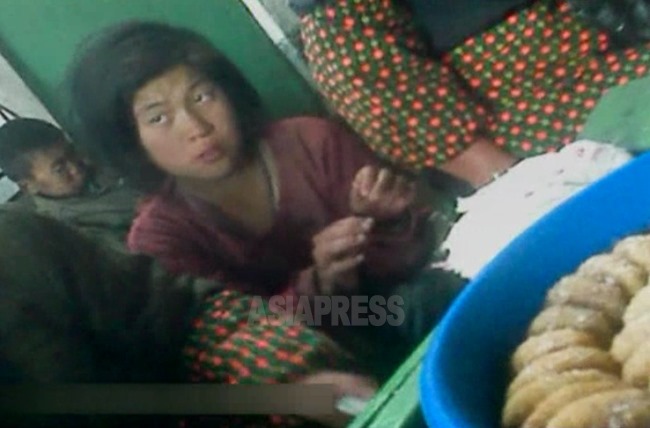
(FILE PHOTO) A homeless child who looks to be around middle-school age is warming themself from the heat of burning coal briquettes. Take in November 2012 (ASIAPRESS)
◆ Robberies, extortion, and begging…a savage atmosphere
“A” told ASIAPRESS more about what “B” told him:
“The downtown area of Hamhung is brutal. It’s like a different world compared to where I live. When he got off at Hamhung Station in the daytime, several swindlers and pickpockets swarmed around him. They didn’t try to steal from him without being seen, they openly put their hands into his bag or pockets. Some even showed him knives.
“They know that he wouldn’t give them money even if they demand it, so if they saw him carrying something, they would come over and say, ‘What do you have? Share it with me.’ He (“B”) told me he was scared.
“The police and enforcer teams stand around managing security, and so he yelled out to them, but the criminal didn’t even try to run. He just smiled and walked away.
“Women don’t go out alone because they’re scared of getting robbed, and they make sure to take a man with them when they do. People gather in groups of three to five when they ride bikes, because robbers will steal them, too.
“When he went to Sapo Market, two men in front of the public toilet told him to give them money, but when he said he had no money, they told him to hand over the vegetables in his bag. He gave them the entire bag because he feared the murderous look in their eyes. People at the market just pretended not to notice what had happened.
“There’s also a lot of homeless people. He saw more than 20 of them at Sapo Market. Students were also selling goods, almost like they were begging for money. He was surprised because they kept trying to get him to buy some rubber bands.
“There were a lot of very thin men sitting on the streetside. They were clearly out of work, but (the authorities) weren’t doing anything about them.
※ For decades, the Kim Jong-un regime had forced adult men to work at assigned workplaces, and those who fail to go to work or leave their assigned workplaces are considered “jobless” and face harsh crackdowns and punishment.
◆ Why is Hamhung in such dire conditions?
Why is a large city like Hamhung facing such bad conditions?
Several reporting partners agreed that the reason lies in the fact that the city “has a large population and is not close to farming areas.”
In fact, even during the mass famine of the late 1990s, Hamhung saw a much greater number of deaths than other cities. Hamhung is an industrial city, with factories related to chemicals and textiles. There are many large factories that have more than 5,000 workers.
In the late 1990s, North Korea faced a social crisis due to the paralyzed economy, and the country’s food distribution system almost completely evaporated. Hamhung, with its large number of factory workers, was suddenly faced with many people facing starvation. There were few farming areas nearby, which meant there were limits to how much food could be brought in.
◆ Restrictions on private economic activities having negative impact
The Kim Jong-un regime has strongly restricted the movement of people and goods under the pretext of preventing the spread of COVID-19. Moreover, the authorities have fiercely cracked down on “non-socialist behavior,” such as people running small-scale private businesses and engaging in wage labor not sanctioned by the government.
As a result, most urban dwellers have faced a drastic fall in their cash incomes and are suffering from poverty. Hamhung has a large population and is far from farming areas, which appears to have caused severe problems for many people in the city.
ASIAPRESS has received unconfirmed reports that the situations in Chongjin and Kimchaek are also severe, with a great number of people dying of starvation and a rise in crime.
※ ASIAPRESS smuggles Chinese cellphones into North Korea to maintain communication with its reporting partners.
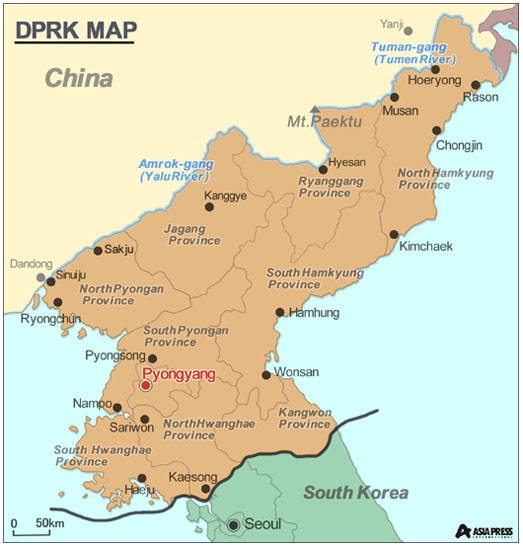
- <Photo Report>The North Korea-China Border (1) In August, Tumen and the midstream of the Tumen River was quiet
- <Inside N. Korea> New proclamation calls for intensified control over the economy…Intense crackdowns on circulation of goods and use of foreign currency (2) Proclamation declares that serious violators face execution or life in prison
- <Inside N. Korea>New proclamation calls for intensified control over the economy…Intense crackdowns on circulation of goods and use of foreign currency (1) The authorities confiscate Chinese yuan and US dollars
- <Inside N. Korea> “People are stealing unripe corn from the fields” Farms already see a rash of thefts of grains…Security guards given live rounds and even soldiers are deployed
- <Inside N. Korea>Even military face increasing malnutrition; A soldier said “We don’t get even half a bowl of food…half of my comrades are in a weakened state”
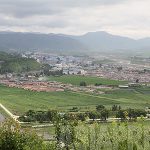
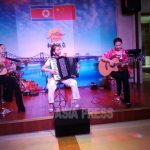

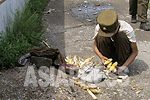
![[Video Report] Nominal Farm Mobilization: People Feel Squeezed](https://www.asiapress.org/rimjin-gang/wp-content/uploads/2018/07/mqdefault-150x150.jpg)
